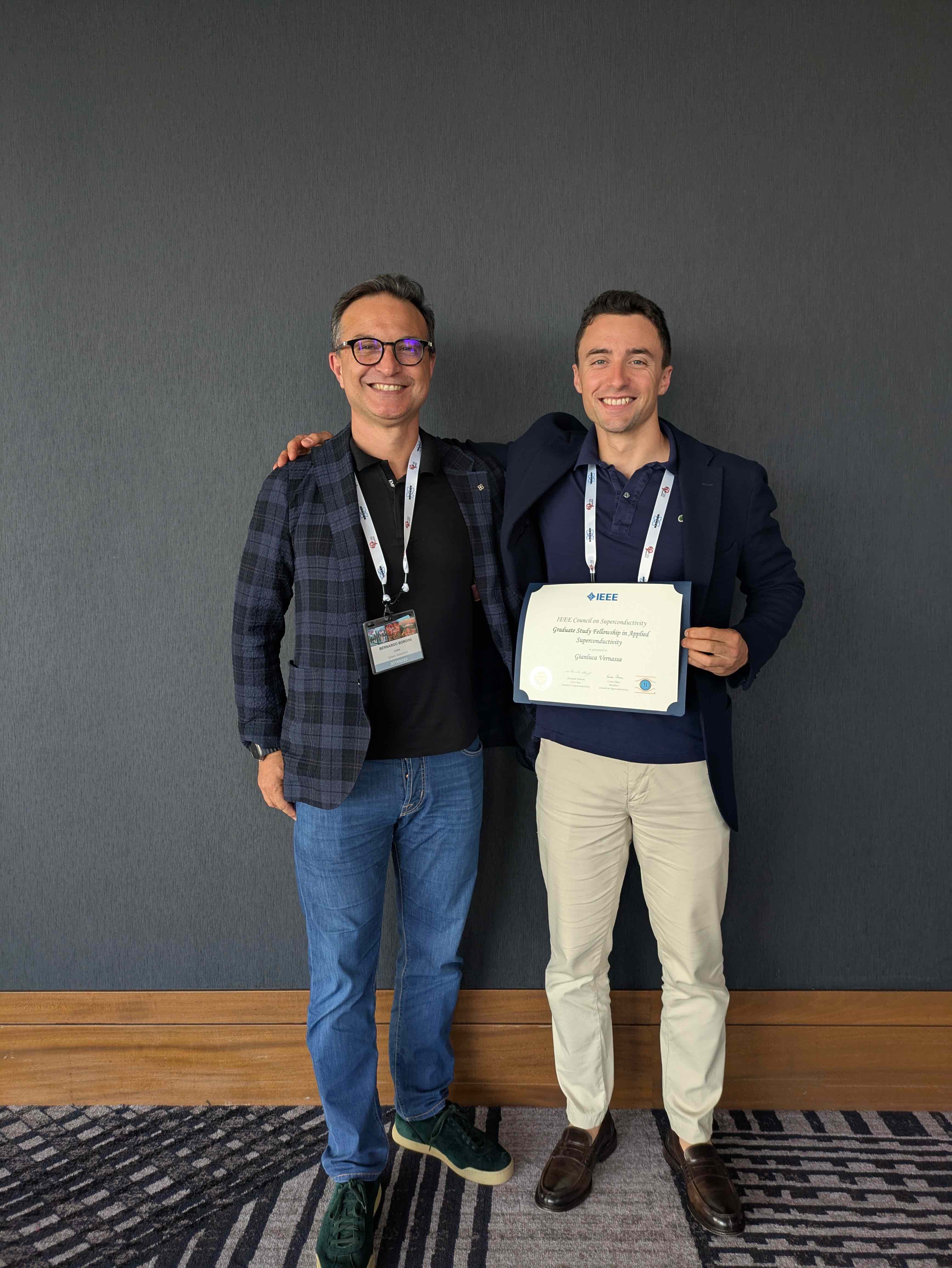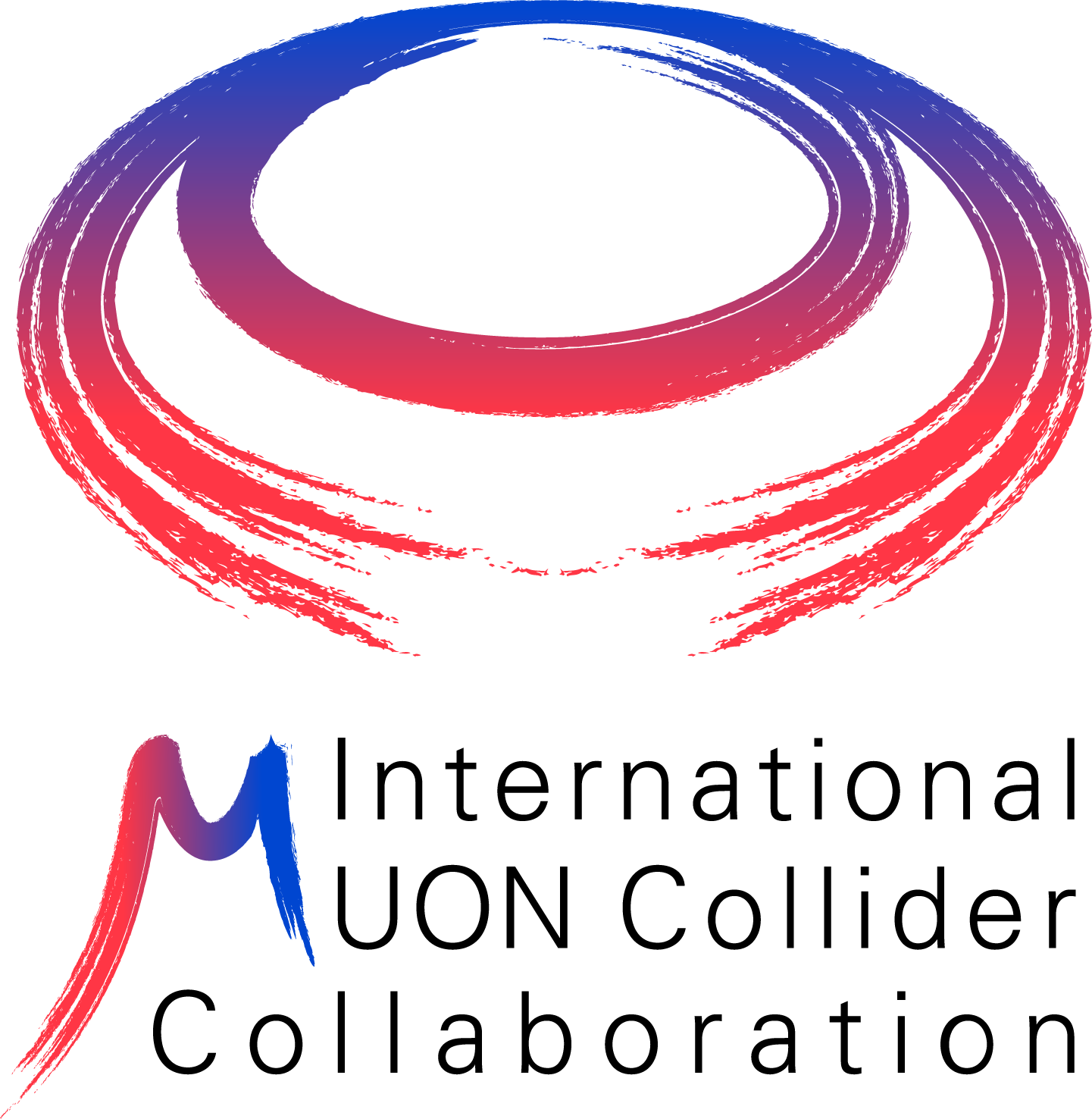Gianluca Vernassa was awarded the IEEE CSC Graduate Study Fellowship for his work on REBCO superconductors, a technology that could help shape the powerful magnets needed for the Muon Collider.
On 2 July, at this year’s International Conference on Magnet Technology, Gianluca Vernassa, PhD student at the École des Mines de Saint-Étienne and IMCC member, received the IEEE Council on Superconductivity Graduate Study Fellowship Award for his research on ultra-high-field REBCO magnets, a technology that may one day play a crucial role in the future Muon Collider.

Superconducting magnets are essential in many advanced applications: from particle physics experiments to cancer treatment via hadron therapy to fusion reactors aiming to power the world. To reach even higher magnetic fields in a sustainable way, researchers are turning to REBCO, a high-temperature superconductor made of extremely thin, layered films.
However, these layered structures face a major challenge. Under strong magnetic forces, these layers can separate, which limits their performance and reliability.
To understand and push the limits of this technology, Gianluca tested when and how the material fails under stress. Supported by Guillaume Kermouche, he identified microstructural characteristics within the REBCO layers that may play a role in how mechanical stresses develop and propagate under extreme conditions. Together with his team, he explored the limits of the material and fed the experimental results into advanced simulations that combine electromagnetic, superconductive, and mechanical properties. This gave researchers a better understanding of where and why such effects can occur.
To validate these insights, he took part in an experiment at the University of Geneva, where REBCO samples were cooled to 4.2 Kelvin, exposed to high electrical currents and a 19-Tesla magnetic field, and subjected to gradual changes in field direction. This allowed them to trigger and study the onset of layer separation, revealing which conditions affect structural integrity and how to improve future designs.
By extending the simulation model with additional physical parameters, Gianluca significantly improved its predictive power and provided tools that may prove essential for designing the powerful magnets required in the Muon Collider.
“This work was made possible by the help of many and I’m especially grateful to Helene Felice, Bernardo Bordini, and Jean-Michel Bergheau for their supervision and guidance along the way,” says Gianluca.
This research, carried out under the auspices of IMCC and MuCol in collaboration with the Laboratoire Georges Friedel France, the University of Geneva and Irfu-CEA Paris-Saclay, contributes valuable insights for the development of next-generation magnet science and technology.
“We are very proud of his work. His findings are crucial building blocks to advance magnet technology beyond the state of the art,” says IMCC’s Luca Bottura, Gianluca’s co-supervisor at CERN. “They will be necessary for future colliders as well as many other applications for science and society.”
Image: Ginaluca_IEEE_Prize
Caption: Gianluca Vernassa (right) with his co-supverisor Bernardo Bordini.
